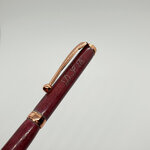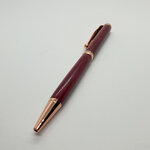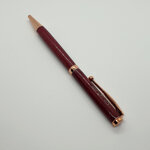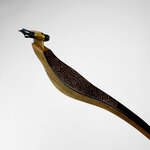bg15
Member
Hey guys,
here is the third pen I made. It`s slimline with Purpleheart and silver wire inlaid initials.
I did this without bushings, that`s why my finish came out bad on the blank ends (CA finish).
In the meantime, I made HDPE bushings for my Large jr Gentlemen fountain pen. I will show that one in the next thread.
Every and any advice is very appreciated...
Thanks for watching
here is the third pen I made. It`s slimline with Purpleheart and silver wire inlaid initials.
I did this without bushings, that`s why my finish came out bad on the blank ends (CA finish).
In the meantime, I made HDPE bushings for my Large jr Gentlemen fountain pen. I will show that one in the next thread.
Every and any advice is very appreciated...
Thanks for watching






